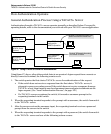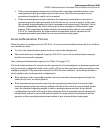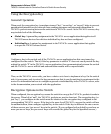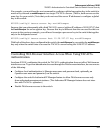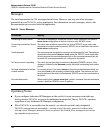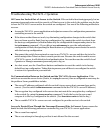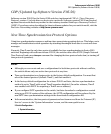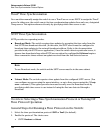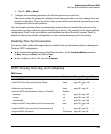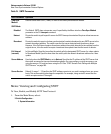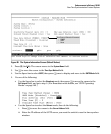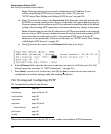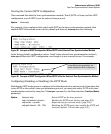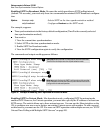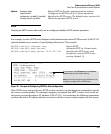
189
Enhancements in Release F.02.02
New Time Synchronization Protocol Options
TimeP Time Synchronization
You can either manually assign the switch to use a TimeP server or use DHCP to assign the TimeP
server. In either case, the switch can get its time synchronization updates from only one, designated
Timep server. This option enhances security by specifying which time server to use.
SNTP Time Synchronization
SNTP provides two operating modes:
■ Broadcast Mode: The switch acquires time updates by accepting the time value from the
first SNTP time broadcast detected. (In this case, the SNTP server must be configured to
broadcast time updates to the network broadcast address. Refer to the documentation
provided with your SNTP server application.) Once the switch detects a particular server, it
ignores time broadcasts from other SNTP servers unless the configurable
Poll Interval expires
three consecutive times without an update received from the first-detected server.
Note
To use Broadcast mode, the switch and the SNTP server must be in the same subnet.
■ Unicast Mode: The switch requests a time update from the configured SNTP server. (You
can configure one server using the menu interface, or up to three servers using the CLI
sntp
server
command.) This option provides increased security over the Broadcast mode by
specifying which time server to use instead of using the first one detected through a
broadcast.
Overview: Selecting a Time Synchronization Protocol or Turning Off
Time Protocol Operation
General Steps for Running a Time Protocol on the Switch:
1. Select the time synchronization protocol: SNTP or TimeP (the default).
2. Enable the protocol. The choices are:
• SNTP:
Broadcast or Unicast



